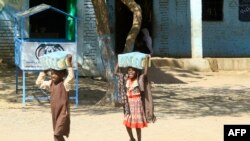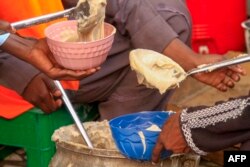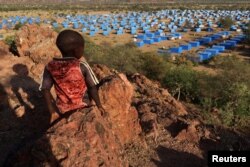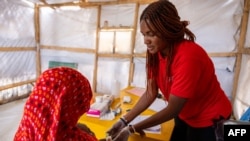Hunger
*Some 17.7 million of Sudan's 49 million population were facing what experts term acute food insecurity, a sharp increase from last year, according to a projection covering the five months to February by the IPC, a globally recognised hunger monitor. That means their lives or livelihoods are in immediate danger because they don't have enough food.
*Of those, 4.9 million are estimated to be facing emergency levels of hunger, one step from famine. The IPC said last month it had not been able to update its assessment on Sudan because of data gaps and connectivity challenges but it warned that immediate action was needed to prevent mass death.
*Women and girls are particularly vulnerable, since they often eat last and least within households and are at increased risk of gender-based and sexual violence.
*Agriculture, which most of the population depends on for income, has been badly disrupted, as farmers flee the fighting and lose access to supplies.
Displacement
*More than 8.6 million people, or about 16% of the population, have fled their homes since the conflict started. *This makes Sudan the biggest displacement crisis globally, with an additional 3 million people homeless due to previous
conflicts, mainly in Darfur.
*More than 2 million of the displaced have crossed to neighbouring countries struggling with their own security and economic challenges. Hundreds of thousands have fled to Egypt, Chad and South Sudan, with small numbers arriving in Ethiopia and the Central African Republic.
*Within Sudan, many were forced to flee for a second time as the RSF took control in December of al-Gezira state, a hub for aid efforts where many people had sought shelter.
Livelihoods
*The war has hammered economic activity, with the economy contracting 12% in 2023, according to the World Bank. The pace of contraction is on track to be more than double that seen during wars in Yemen and Syria.
*Infrastructure has been badly damaged, supply lines have broken down and the formal banking system crumbled, leaving many salaries unpaid.
*Nearly half the population is unemployed, according to the International Monetary Fund.
*Prices have risen sharply in many areas, while blackouts blamed on the warring parties and network outages have hampered mobile payments that many rely on.
Health and Education
*An estimated 11 million Sudanese are in need of urgent health assistance but 70% of health facilities in conflict affected areas are shut or partially functional, according to the World Health Organization.
*Disease is spreading. More than 11,000 suspected cases of cholera, including over 300 deaths, have been reported from 11 of Sudan's 18 states, according to the health ministry. Outbreaks of measles, malaria and dengue fever, are ongoing in several states.
*Some 19 million children risk losing out on their education because of the war. One in two children, 10 million in total, have been in an active warzone over the past year, according to Save the Children.
Access to Aid
*Aid agencies say the army restricts access for humanitarian relief, and what little gets through is at risk of looting in RSF-controlled areas. Both sides have denied impeding aid efforts.
*Due to fighting and other blocks on access, just one in 10 of those facing emergency levels of hunger have access to assistance.
*Volunteer-run "emergency rooms" linked to the pro-democracy networks from Sudan's 2018-19 uprising have tried to provide minimal food rations and keep some basic services running.
*Aid agencies are seeking $2.7 billion from donors to provide relief to 14.7 million people in urgent need of help in Sudan this year. To date, less than 6% of that amount has been raised. The U.N. refugee agency is seeking $1.4 billion to help people who have fled to five neighbouring countries.




Forum